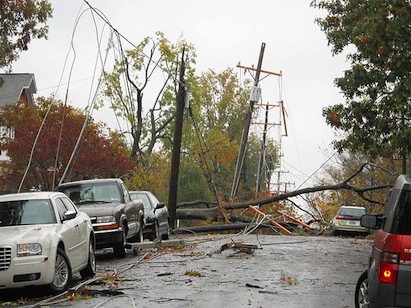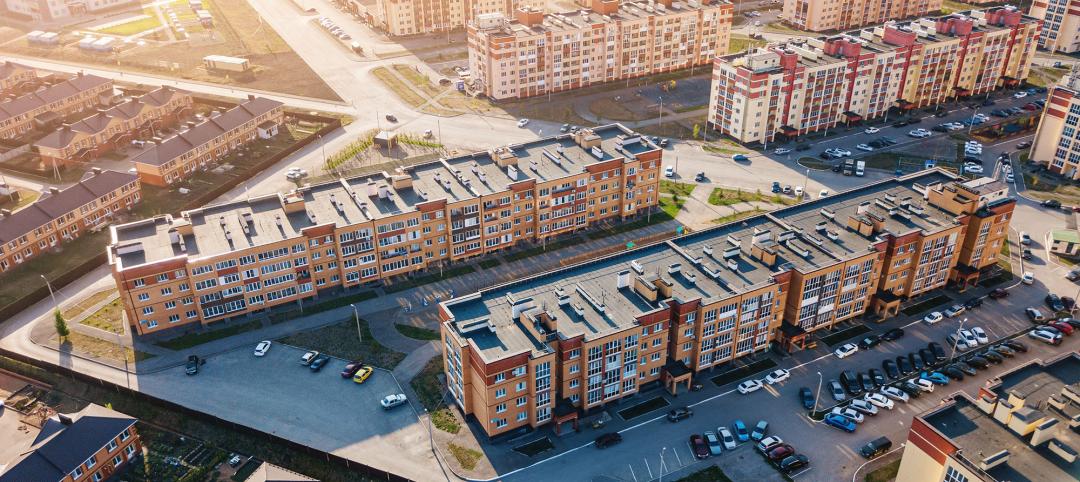With over fifty percent of the population already living in urban areas, cities must grapple with the potentially catastrophic effects of climate change (think: Superstorm Sandy in New York). In a new report, Jones Lang LaSalle (JLL) has identified steps cities can take to make their infrastructure more resilient to changing climate conditions.
“Cities can learn from each other in how to become resilient in the face of extreme weather events caused by climate change,” said Dan Probst, Chairman of Energy and Sustainability Services at JLL. “That means future-proofing every aspect of the city, including flood protection as sea levels rise, and rethinking infrastructure, electrical grids, food supplies, healthcare, telecommunications, transportation, water, waste management and more.”
The report, Global Sustainability Perspective, provides real-world examples of resiliency-building efforts in New York City and other major cities around the globe, focused on four themes: the importance of resiliency rising as population increases; flood protection; sustainable neighbourhoods; and inter-city idea exchange.
As the population increases, so must resiliency:
In most cases, the effects of the most catastrophic events can be curbed when cities increase the resiliency of their systems and infrastructure. To future-proof a city in this way, leaders can use The Rockefeller Foundation’s definition of urban resiliency as a roadmap. The foundation defines a resilient city as one with spare capacity and backups for key systems; flexibility to adapt and evolve as the climate changes; limited risk to contain the effects of an infrastructure system component failure; and rapid rebound following a disruption. By addressing these aspects of resiliency cities can mitigate the risks of natural disasters.
Flood prevention is population protection:
Discussions on future-proofing an urban environment cannot exclude the devastating effects of flooding, resulting from the many types of storms. A recent Nature Climate Change report predicts that the average worldwide cost of urban flooding will rise to US$60 billion in 2050 if cities invest in adaptation strategies—and as much as US$1 trillion if they do not.
Other ways cities are attacking flood prevention: Mumbai has deepened and widened its major rivers, built new pumping stations to discharge storm water to the sea, and installed flow gauges upriver to provide early flood warning. The Netherlands—long reliant on dikes, dams, locks and storm surge barriers—is allowing nature to reclaim some flood-prone areas, while Venice is constructing a movable tidal barrier system to close water inlets during high tides. Kuala Lumpur is investing more than US$645 million to construct a floodwater tunnel, flood retention ponds and a high-volume drainage system.
Sustainable neighborhoods are the backbone of resilient cities:
Micro-communities such as neighborhoods and districts can add huge impact – particularly in preparing for, and responding to climate change events. A new North American cities initiative, “2030 District,” is helping cities focus on geographically defined downtown areas and pursue district-wide targets for conserving energy and water and reducing vehicle emissions. The 2030 Districts are at the forefront of regional and national grassroots efforts to create strong environmental partnerships, coalitions and collaboration around ambitious, measurable goals at the local level.
Seattle, Los Angeles, Pittsburgh and Cleveland are among the participants to date, with nine other cities expected to join shortly.
Inter-city partnerships: sharing sustainability ideas drives resiliency:
Some cities are sharing knowledge to improve resiliency for all. The C40 Cities ClimateLeadership Group, for example, brings together city leaders to share best practices for sustainable action on climate change, such as car-free days and disclosure of buildings’ energy efficiency ratings. Another effort, the Better Buildings Partnership(BBP), creates partnerships between landlords, tenants, government leaders and sector partners to improve the sustainability performance of buildings. Sydney, London and Toronto are current participants, each benefiting from shared learnings about quantifiable actions toward greater resiliency and sustainability.
Related Stories
Laboratories | Apr 12, 2024
Life science construction completions will peak this year, then drop off substantially
There will be a record amount of construction completions in the U.S. life science market in 2024, followed by a dramatic drop in 2025, according to CBRE. In 2024, 21.3 million sf of life science space will be completed in the 13 largest U.S. markets. That’s up from 13.9 million sf last year and 5.6 million sf in 2022.
MFPRO+ News | Apr 12, 2024
Legal cannabis has cities grappling with odor complaints
Relaxed pot laws have led to a backlash of complaints linked to the odor emitted from smoking and vaping. To date, 24 states have legalized or decriminalized marijuana and several others have made it available for medicinal use.
Multifamily Housing | Apr 12, 2024
Habitat starts leasing Cassidy on Canal, a new luxury rental high-rise in Chicago
New 33-story Class A rental tower, designed by SCB, will offer 343 rental units.
MFPRO+ News | Apr 12, 2024
Greystar becomes top apartment owner, manager, and developer in 2024
One firm set records for this year’s National Multifamily Housing Council Top 50 roundup of multifamily firms. Greystar now sits at number one in the NMHC’s lists for top apartment owner, manager, and developer in 2024.
Construction Costs | Apr 11, 2024
Construction materials prices increase 0.4% in March 2024
Construction input prices increased 0.4% in March compared to the previous month, according to an Associated Builders and Contractors analysis of the U.S. Bureau of Labor Statistics’ Producer Price Index data released today. Nonresidential construction input prices also increased 0.4% for the month.
K-12 Schools | Apr 10, 2024
A San Antonio school will provide early childhood education to a traditionally under-resourced region
In San Antonio, Pre-K 4 SA, which provides preschool for 3- and 4-year-olds, and HOLT Group, which owns industrial and other companies, recently broke ground on an early childhood education: the South Education Center.
University Buildings | Apr 10, 2024
Columbia University to begin construction on New York City’s first all-electric academic research building
Columbia University will soon begin construction on New York City’s first all-electric academic research building. Designed by Kohn Pedersen Fox (KPF), the 80,700-sf building for the university’s Vagelos College of Physicians and Surgeons will provide eight floors of biomedical research and lab facilities as well as symposium and community engagement spaces.
K-12 Schools | Apr 10, 2024
Surprise, surprise: Students excel in modernized K-12 school buildings
Too many of the nation’s school districts are having to make it work with less-than-ideal educational facilities. But at what cost to student performance and staff satisfaction?
Cultural Facilities | Apr 8, 2024
Multipurpose sports facility will be first completed building at Obama Presidential Center
When it opens in late 2025, the Home Court will be the first completed space on the Obama Presidential Center campus in Chicago. Located on the southwest corner of the 19.3-acre Obama Presidential Center in Jackson Park, the Home Court will be the largest gathering space on the campus. Renderings recently have been released of the 45,000-sf multipurpose sports facility and events space designed by Moody Nolan.
Green | Apr 8, 2024
LEED v5 released for public comment
The U.S. Green Building Council (USGBC) has opened the first public comment period for the first draft of LEED v5. The new version of the LEED green building rating system will drive deep decarbonization, quality of life improvements, and ecological conservation and restoration, USGBC says.

















